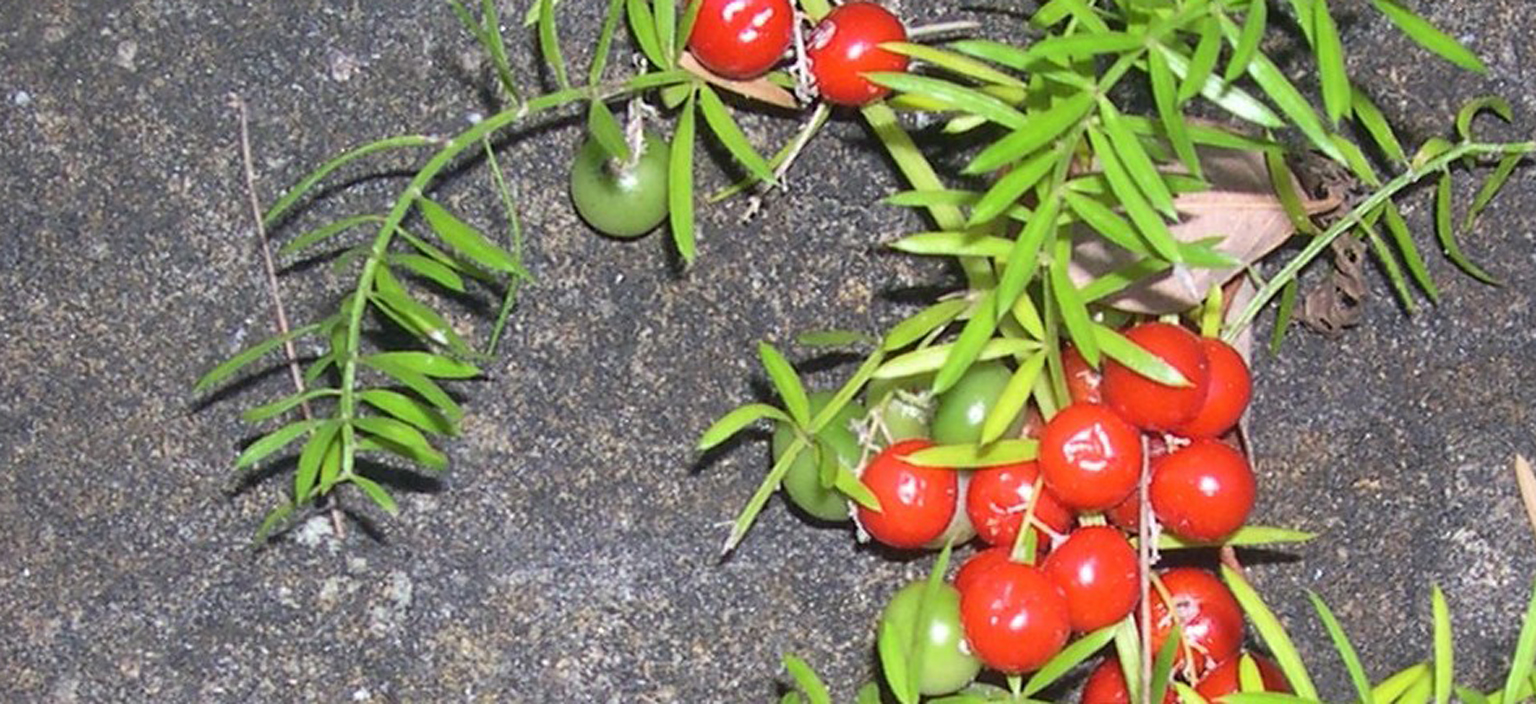
Asparagus Fern is a multi-branched scrambler that grows along the ground, forming a dense mat of tuberous roots. Spiny branches grow to 60cm. It produces white flowers in late summer followed by red berries.
Family: Liliaceae- Asparagaceae
Origin: South Africa
Habit: perennial plant forms dense blankets of growth above ground
Leaves: The "leaves", which occur in clusters of 1-5, are really cladodes forming on persistent stems 1-2 m long arising from a central corm or crown
Flowers: white-pink flowers, each about 5 mm in diameter
Fruit: berry, 5-8 mm wide, green at first then maturing to a glossy red. It contains one or a few black, globular seeds 3-5 mm diameter.
Roots: The root system forms dense underground clumps and mats
Dispersal: asparagus reproduces both by seed and vegetatively from its crown or corm. Spread occurs through the sale of nursery stock to gardeners, the dumping of garden waste containing crowns, fruits and seeds, and when birds feed on the fruit and disperse the seed.
General Biosecurity Duty
All plants are regulated with a general biosecurity duty to prevent, eliminate or minimise any biosecurity risk they may pose. Any person who deals with any plant, who knows (or ought to know) of any biosecurity risk, has a duty to ensure the risk is prevented, eliminated or minimised, so far as is reasonably practicable.
Prohibition on dealings
Must not be imported into the State or sold
Control
Wear thick gloves. Using secateurs cut off stems about 20cm above soil level and place in a bag. Using a knife, peter lever or mattock, cut around crown to sever roots and water tubers. Lift out crown and bag and place in garbage bin. Water tubers can be left in the ground.
More information
Department of Primary Industries
